 How To Build A Water Polo Goal
How To Build A Water Polo Goal
Here are plans for a wall and a floating goal, courtesy of USWP's National Development Committee and CAD artist Chip Harper. Enjoy!
Please note that, although I'm hosting the plans here on my website, I didn't design these goals, nor have I ever built one. I don't have a bill of materials for building either model, but I would love to put one on this website if you'd like to send one to me. Pictures of goals you've made using these (or other) plans would be welcome, too. If I get enough of them, I can start a "gallery" section. Suggestions for modifications or improvements to these designs are also welcome, although I'll list them as addenda instead of modifying the original designs.
Good luck, have fun, and play polo!
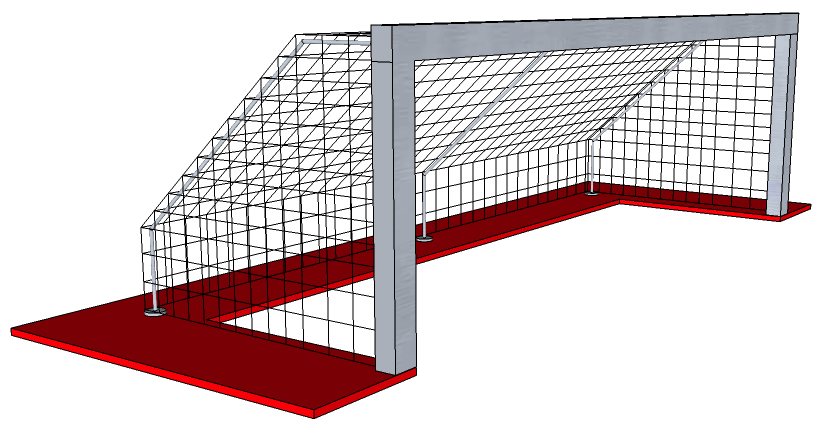 |
This section contains a description and plans (2 pages) for a Floating Goal. The plans can be downloaded in several formats. The .gif, .pdf and .eps formats are one file per page; the .dwg and .dxf have both pages in one file. Elle Nigrini of Sable Design was awesome enough to make a 3D model of the goal (shown at left) using Google SketchUp (freely available from Google) and share it with the world. |
| Choose your format | ||||
|---|---|---|---|---|
| Printable | Editable | |||
| GIF (21 KB) |
Adobe PDF (77 KB) | EPS (265 KB) |
AutoCAD .dwg (132 KB) |
Zipped .dxf (57 KB) |
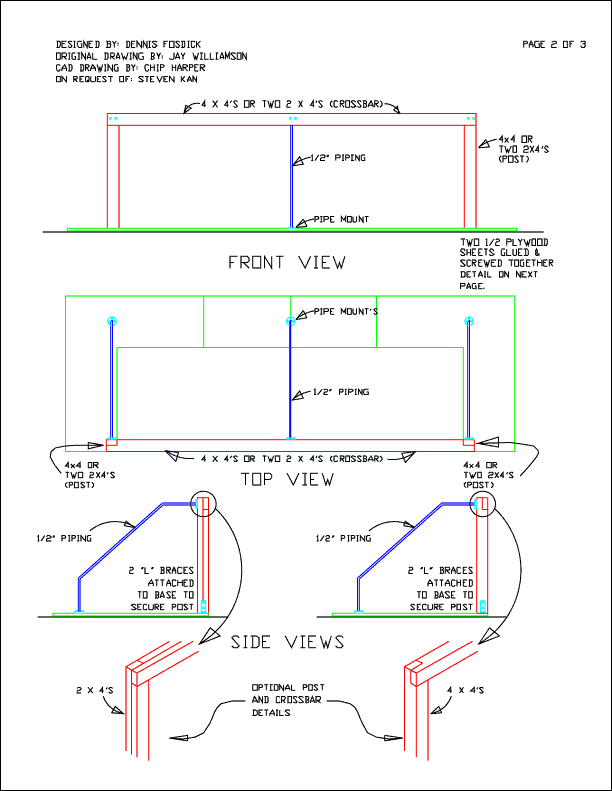 | ||||
| Printable | Editable | |||
| GIF (19 KB) |
Adobe PDF (46 KB) | EPS (235 KB) |
AutoCAD .dwg (132 KB) |
Zipped .dxf (57 KB) |
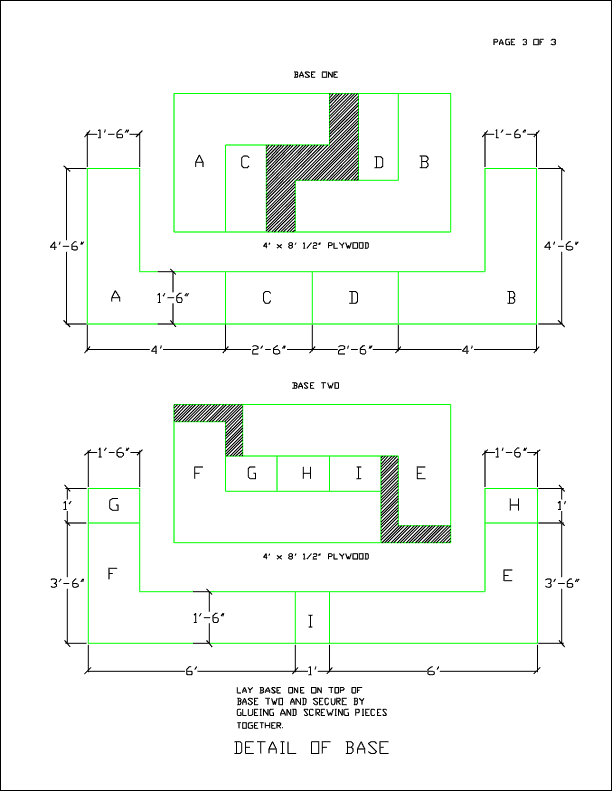 | ||||
The original design is copyright and used courtesy of U.S. Water Polo. These drawings were re-created on donated time by Chip Harper, who may be contacted for freelance CAD work. These drawings may be freely modified and re-distributed as long as the credits and annotations remain intact.
Here's the text that came with the diagrams:
Specifications: the goal posts and crossbar must be 3 inches (0.75m) wide of wood, metal, or synthetic (plastic) material. The color must white (FINA and U.S. Water Polo) or traffic yellow, orange, or white (NCAA). They must be square with the goal line.
The inner side of the goal must be 3 meters (10 feet) apart. The underside of the crossbar must be 0.90 meters (3 feet) above the water surface.
Limp nets must be attached to the goal fixtures to enclose the entire goal surface with at least 0.30 meters (1 foot) clear space behind the goal line, everywhere within the goal area.
Directions:
1. Cut 1/2 in. or 5/8 in. marine plywood (regular plywood will not last) as shown in Page 2. Glue liberally and screw pieces together. Clamp and apply weight.
2. Notch 4x4 posts and crossbar. Glue and bolt together. Or it is possible to glue two 2x4's together to make the 4x4, varying lengths to make the notches. Be sure to use redwood or treated wood.
3. Make three supports and weld plate on each end to screw or bolt to wood. Wire brush welds and prime.
4. Attach posts and supports to base. Insert screw eyes into posts, crossbar, and base to attach net.
5. Paint white (FINA, USWP) or white, traffic yellow or orange (NCAA).
6. Put in water and adjust kickboards under base to support weight of posts and crossbar. Play polo.
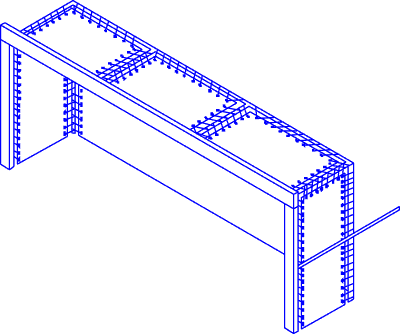 |
This section contains a description and plans (1 page) for a Wall Goal. The plans are downloadable in several formats. |
| Choose your format | ||||
|---|---|---|---|---|
| Printable | Editable | |||
| GIF (16 KB) |
Adobe PDF (106 KB) | EPS (290 KB) |
AutoCAD .dwg (230 KB) |
Zipped .dxf (1.07 MB) |
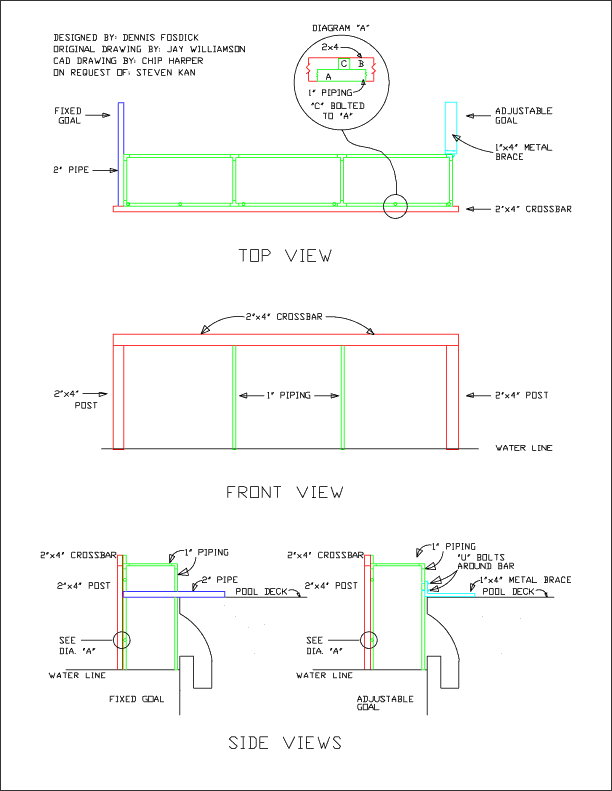 | ||||
The GIF is can be printed directly from most browsers, but it relatively low quality and cannot be edited. The .pdf requires Adobe Acrobat Reader (freely available from Adobe), and is of decent quality for printing to 8.5" x 11", but cannot be edited.
The .eps (Encapsulated PostScript) file can be edited in Adobe Illustrator or other graphics apps, and is vector-based so it will scale up to any size you wish. The .dwg is the original, and can be edited in AutoCAD or late versions of Illustrator. The .dxf can unzipped and then be imported for scaling and editing in most CAD programs and many graphics programs, such as Adobe Illustrator and Graphic Convertor.
The original design is copyright and used courtesy of U.S. Water Polo. These drawings were re-created on donated time by Chip Harper, who may be contacted for freelance CAD work. These drawings may be freely modified and re-distributed as long as the credits and annotations remain intact.
Here's the text that came with the diagram:
Specifications (NCAA): must have flat surface 3 inches (0.75m) wide, of rigid material around the goal face. The color must traffic yellow, orange, or white.
The goal posts must be 10 feet (3.0m) apart and the crossbar must be 3 feet (0.9m) above the water when the water is 5 feet (1.5m) or more in depth; or, it must be 8 feet (2.4m) from the floor of the playing area if the water is under 5 feet in depth. All measurements must be taken from the inside of the goal frame.
Canvas backing must be loosely attached in front of all supports to enclose the back and sides of the goal space (floating goals must have net backing).
The goal space must be at least 18 inches (45.72cm) deep without any obstructions.
Note: When making backing, fold and sew the canvas over a piece of webbing before putting in the grommets. The will add years to the backing as torn out grommets are the major points of failure in goals.
Directions:
1. Cut pipe to length. Weld back section together.
2. Put on 18 inch pieces for depth. Be sure all angles are square.
3. Attach front pipe pieces and studs for wood facing. Also add chain links for lacing backing.
4. Wire brush all welds; drill holes for bolts to attach facing. Prime all metal and wood parts.
5. Paint all goal surfaces. Attach wood face after first coat and give as many additional coats as needed.
6. Attach backing (and mounting brackets if adjustable) and play polo.
Feedback? Additions? Want to hire me? Mail me @ steven@kan.org
Want to hire the CAD artist? email Chip Harper
Last updated: 02/02/06This page has been viewed:
times since 10/19/99. Thanks, and please come back soon!
 Back to my home page.
Back to my home page.